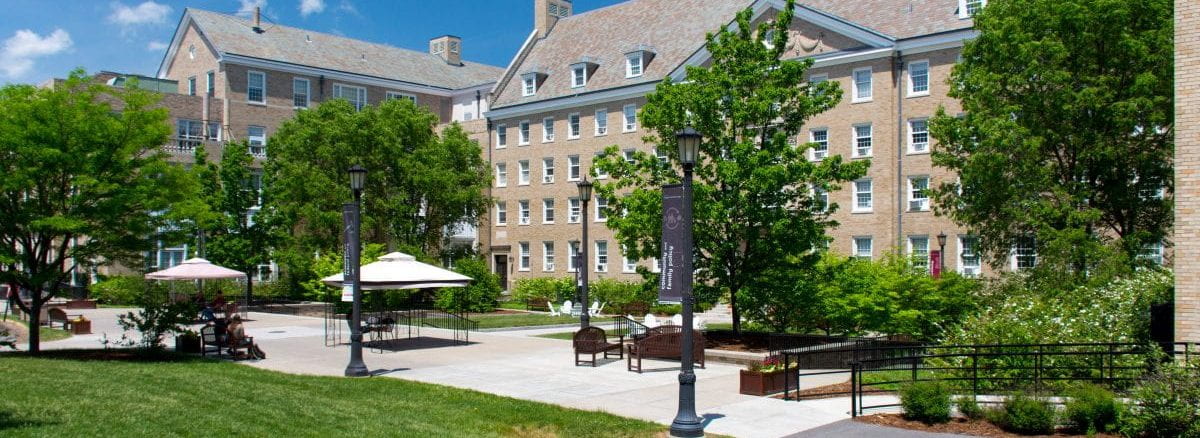Joe De Sena '90, Human Ecology and co-founder of Spartan Race, extreme athletic competitions held worldwide, interviewed Professor Robert Sternberg as part of a podcast series called, "Spartan Up!" In this episode, Dr. Sternberg discusses why creativity, practical thinking, wisdom and ethics are better indicators of intelligence than IQ scores.
New EEG method for studying how nutrition affects infant memory
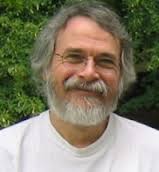 Steven Robertson, a developmental psychologist and Professor of Human Development at Cornell University, worked with students from the Division for Nutritional Sciences in the College for Human Ecology on a new approach for assessing the effects of nutrition on infant recognition memory through the use of Electroencephalographic (EEG) imaging.
Steven Robertson, a developmental psychologist and Professor of Human Development at Cornell University, worked with students from the Division for Nutritional Sciences in the College for Human Ecology on a new approach for assessing the effects of nutrition on infant recognition memory through the use of Electroencephalographic (EEG) imaging.
Do bilingual homes raise better communicators?
By Jann Ingmire Reprinted from Futurity.org
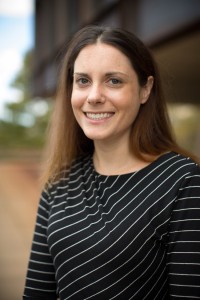
Young children who hear more than one language spoken at home become better communicators, a new study finds. Effective communication requires the ability to take others’ perspectives.
Researchers discovered that children from multilingual environments are better at interpreting a speaker’s meaning than children who are exposed only to their native tongue.
The most novel finding is that the children don’t even have to be bilingual themselves—it’s the exposure to more than one language that is the key for building effective social communication skills.
Previous studies have examined the effects of being bilingual on cognitive development. This study, published online in Psychological Science, is the first to demonstrate the social benefits of just being exposed to multiple languages.
“Children in multilingual environments have extensive social practice in monitoring who speaks what to whom, and observing the social patterns and allegiances that are formed based on language usage,” explains Katherine Kinzler, associate professor of psychology at the University of Chicago. [Over the summer, Kinzler joined the faculty of the Department of Human Development.]
“These early socio-linguistic experiences could hone children’s skills at taking other people’s perspectives and provide them tools for effective communication.”
Kids from 3 backgrounds
Study coauthor Boaz Keysar, professor of psychology, says the study is part of a bigger research program that attempts to explain how humans learn to communicate. “Children are really good at acquiring language. They master the vocabulary and the syntax of the language, but they need more tools to be effective communicators,” says Keysar. “A lot of communication is about perspective-taking, which is what our study measures.”
Keysar, Kinzler, and their coauthors, doctoral students in psychology Samantha Fan and Zoe Liberman, had 72 4- to 6- year- old children participate in a social communication task. The children were from one of three language backgrounds: monolinguals (children who heard and spoke only English and had little experience with other languages); exposures (children who primarily heard and spoke English, but they had some regular exposure to speakers of another language); and bilinguals (children who were exposed to two languages on a regular basis and were able to speak and understand both languages). There were 24 children in each group.
Each child who participated sat on one side of a table across from an adult and played a communication game that required moving objects in a grid. The child was able to see all of the objects, but the adult on the other side of the grid had some squares blocked and could not see all the objects. To make sure that children understood that the adult could not see everything, the child first played the game from the adult’s side.
For the critical test, the adult would ask the child to move an object in the grid. For example, she would say, “I see a small car, could you move the small car?” The child could see three cars: small, medium, and large. The adult, however, could only see two cars: the medium and the large ones. To correctly interpret the adult’s intended meaning, the child would have to take into account that the adult could not see the smallest car, and move the one that the adult actually intended—the medium car.
Picking up on perspective
The monolingual children were not as good at understanding the adult’s intended meaning in this game, as they moved the correct object only about 50 percent of the time. But mere exposure to another language improved children’s ability to understand the adult’s perspective and select the correct objects.
The children in the exposure group selected correctly 76 percent of the time, and the bilingual group took the adult’s perspective in the game correctly 77 percent of the time.
“Language is social,” notes Fan. “Being exposed to multiple languages gives you a very different social experience, which could help children develop more effective communication skills.”
Liberman adds, “Our discovery has important policy implications, for instance it suggests previously unrealized advantages for bilingual education.”
Some parents seem wary of second-language exposure for their young children, Kinzler comments. Yet, in addition to learning another language, their children might unintentionally be getting intensive training in perspective taking, which could make them better communicators in any language.
A gap year does not weaken study success
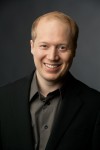
Felix Thoemmes, an assistant professor in the Department of Human Development was part of team of researchers that examined the effect of taking a gap year before college on student persistence in college.
Reprinted from the Academy of Finland Communications, May 12, 2015
A gap year between high school and the start of university studies does not weaken young people’s enthusiasm to study or their overall performance once the studies have commenced. On the other hand, adolescents who continue to university studies directly after upper secondary school are more resilient in their studies and more committed to the study goals. However, young people who transfer directly to university are more stressed than those who start their studies after a gap year. These research results have been achieved in the Academy of Finland’s research programme The Future of Learning, Knowledge and Skills (TULOS).
“For young people, the transition from upper secondary school to further studies is a demanding phase in life, and many adolescents are tired at the end of upper secondary school. The demanding university admission tests take place close to the matriculation examination in Finland and require diligent studying from students. For many, a gap year offers an opportunity to take a break and think about future choices while developing a positive view of the future,” says Professor Katariina Salmela-Aro, the principal investigator of the study.
The transition period from secondary education to further studies is a key phase for the development of young people. It is a phase in which adolescents ponder over important future choices regarding educational directions and career goals.
The impact of a gap year on young people’s motivation to study and their future educational path was studied for the first time in the Academy of Finland’s research programme The Future of Learning, Knowledge and Skills. The research was conducted in Finland with the help of the FinEdu longitudinal study, which followed young people for several years after upper secondary school. A corresponding study was conducted concurrently in cooperation with Australian researchers among local youth in Australia.
“In the light of our research findings, a gap year between secondary education and further studies is not harmful, especially if the young person only takes one year off. When these adolescents are compared with those who continue their studies directly after upper secondary school, those who take a gap year quickly catch up with the others in terms of study motivation and the effort they put into their studies,” says Salmela-Aro.
If young people take more than one gap year, however, they may have more difficulties coping with the studies and with study motivation. “In the transition phase, many young people are left quite alone, which may make the transition to a new study phase quite challenging.”
According to the research results, those young people who begin their further studies directly after upper secondary school are more resilient in their studies and more committed to their goals than those who take a gap year. In addition, adolescents who continue their studies immediately after upper secondary school believe in their ability to achieve their goals more than those who start their studies after a gap year. On the other hand, they find studying and aiming for study goals more stressful than the students who take a gap year.
“The research results also suggest that students who take a gap year are slightly more susceptible to dropping out of university later on than those who transfer to university directly after upper secondary school,” says Salmela-Aro.
The study has been published in Developmental Psychology:
I wish I had (not) taken a gap-year? The psychological and attainment outcomes of different post-school pathways. Parker, Philip D.; Thoemmes, Felix; Duinevald, Jasper J.; Salmela-Aro, Katariina. Developmental Psychology, Vol 51(3), Mar 2015, 323–333. http://dx.doi.org/10.1037/a0038667
More information:
- Professor Katariina Salmela-Aro, Cicero Learning, University of Helsinki and University of Jyväskylä, tel. +358 50 415 5283, katariina.salmela-aro(at)helsinki.fi
Academy of Finland Communications
Riitta Tirronen, Communications Manager
tel. +358 295 335 118
firstname.lastname(at)aka.fi
ISS funds oral histories, election surveys, other work
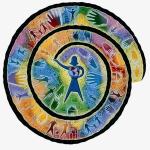 Scholars funded through the Institute for the Social Sciences’ small grant program this spring seek to answer such questions as, how do economic crises affect voters’ behavior, and how do public perceptions of social inequality influence efforts to mobilize cooperative solutions to climate change?
Scholars funded through the Institute for the Social Sciences’ small grant program this spring seek to answer such questions as, how do economic crises affect voters’ behavior, and how do public perceptions of social inequality influence efforts to mobilize cooperative solutions to climate change?
Twice yearly, the Institute for the Social Sciences (ISS) provides up to $12,000 to tenured and tenure-track faculty through its peer-reviewed small grant program. This spring, faculty from six different colleges won awards.
“One of the strengths of the program is that it forges interdisciplinary connections across campus, both in the traditional strongholds of the social sciences and units where scholars are working at the boundaries of social sciences, humanities and life sciences,” said Kim Weeden, professor of sociology and the Robert S. Harrison Director of ISS.
One of these boundary-spanning projects is a collaborative effort between Malte Jung and Steven Jackson, both in Computing and Information Sciences, and a surgical team at Weill Medical College in New York City. They will compare robotic and laparoscopic surgical teams.
Christopher Huckfeldt, assistant professor in economics, is calibrating a macroeconomic model of unemployment with data from the Panel Study of Income Dynamics. He is applying quantitative macroeconomic theory to assess the importance of occupational downgrading in generating permanent income losses for workers who lose their job during a recession.
“The ISS grant has put me on a faster track to accomplish the research goals associated with my project. As a junior faculty member, this type of grant is invaluable for establishing a long-term research agenda,” Huckfeldt said.
Claire Lim, assistant professor in economics, is looking at how deregulation, mergers and acquisitions, and changes in regulators’ ideology, have affected executive compensation in the domestic energy industry. She’s also examining how political environments in the U.S. influence the regulation and conduct of energy firms.
Using the Charles Manson murders and subsequent trials in the early 1970s as a stage, Claudia Verhoeven, associate professor in history, hopes to invigorate the historiography through analysis of gender, class, race, geo-politics, pop and mass culture, social movements, religion, the justice system, mass media and militant environmentalism. She intends to properly situate the case in the context of the late 1960s, and provide it with a reception history – a history of the way events were portrayed and perceived at the time.
Jonathon Schuldt, assistant professor of communication, will use his ISS grant to study how socioeconomic status influences beliefs and intentions to address and mitigate climate change.
Alexander Kuo, assistant professor of government, will use the grant to conduct surveys before and after the 2015 national elections in Spain to analyze how an economic crisis affects voter behavior and supports new political movements.
The ISS’ small grants program also is supporting two upcoming conferences.
Trevor Pinch and collaborators Michael Lynch and Bruce Lewenstein, all from science and technology studies, are using ISS funds to support a 2016 conference to take stock of the field of science and technology studies, what it has accomplished and where it is headed.
Another conference, led by Gustavo Flores-Macias, assistant professor in government, is bringing together leading scholars on the political economy of Latin America in a conference to address taxation and its importance to inequality and economic development.
Other recipients of spring 2015 small grants include Adam Anderson, associate professor in human development; Garrick Blalock, associate professor in the Dyson School of Applied Economics and Management; John Forester, professor in city and regional planning; Karel Mertens, associate professor of economics; David Mimno, assistant professor in information science; and Luo Zuo, assistant professor of accounting.
The deadline for the fall 2015 small grants competition is Sept. 8, and applications will be requested shortly after the fall semester begins.
Lori Sonken is the staff writer for the Institute for the Social Sciences.
Researchers identify gene for ’emotionally enhanced vividness’
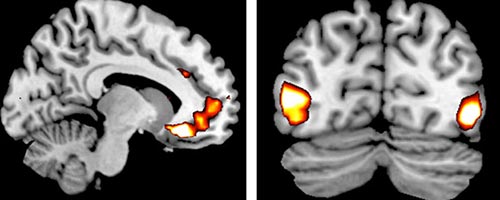
As research subjects viewed emotion-laden pictures while an fMRI (functional magnetic resonance imagining) machine scanned their brains for activity, researchers in a Cornell-University of British Columbia-University of Toronto study began to think: Perhaps our genes really can regulate response to emotional information.
Carriers of a genetic variation (the ADRA2b deletion variant) showed more vivid perceptions of emotional events (called emotionally enhanced vividness or EEV), which was associated with more activity in a region of the brain responsible for regulating emotions and evaluating pleasure and threat (the ventromedial prefrontal cortex), researchers reported in the April 22 Journal of Neuroscience.
The 2014 study was a relatively small one, with 39 subjects undergoing fMRI scans at the University of Toronto. Slightly more than half (21) carried the ADRA2b deletion variant, and the rest did not. But the result was clear. Some people are genetically wired, as the researchers report, to “enhance the subjective vividness of perceptual experience and its emotional enhancement.”
“Emotions are not only about how we feel about the world, but how our brains construct our perception of it,” says Adam K. Anderson, Cornell associate professor of human development and the study’s senior author.
“Our genes influence how our brains see the positive and negative aspects of our world more vividly. As a result, we may come to mistakenly believe the world has more rewards or threats.” “People really do see the world differently,” said Rebecca Todd, first author and assistant professor of psychology at the University of British Columbia. “For people with this gene variation, the emotionally relevant things in the world stand out much more.”
Todd said she believes emotionally enhanced vividness may help explain why some people are more susceptible to PTSD (post-traumatic stress disorder) and intrusive memories following trauma.
The report is titled “Neurogenic Variations in Norepinephrine Availability Enhance Perceptual Vividness.” The study was supported, in part, by the Canadian Institutes of Health Research.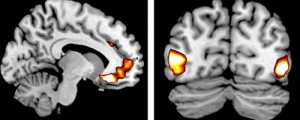
Gerontologist finds the formula to a happy marriage
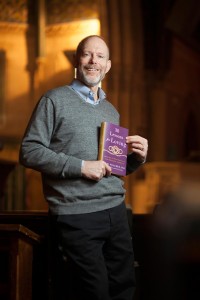
With wedding season in full swing, America’s newlyweds stand to learn from the experts: older adults whose love has endured job changes, child-rearing, economic certainty, health concerns and other life challenges.
Filling our knowledge gap on finding a mate and remaining married, Cornell gerontologist Karl Pillemer completed the Cornell Marriage Advice Project, the largest in-depth interview study ever done of people in very long unions, surveying more than 700 individuals wedded for a total of 40,000 years. The findings are detailed in Pillemer’s book, “30 Lessons for Loving: Advice from the Wisest Americans on Love, Relationships, and Marriage.”
To capture the voice of lived experience, Pillemer conducted a random national survey of nearly 400 Americans age 65 and older, asking how to find a compatible partner and other advice on love and relationships. In subsequent in-person interviews with more than 300 long-wedded individuals – those in unions of 30, 40, 50, or more years – Pillemer captured more insights for overcoming common marriage troubles. His team interviewed divorced individuals, too, asking how others might avoid marital breakups.
The average age of interviewees was 77 and included 58 percent women and 42 percent men. The average length of marriage in the sample was 44 years; the couple with the longest marriage were ages 98 and 101 and had been married 76 years. Responses were coded into the most commonly occurring recommendations, resulting in a list of the most frequently selected lessons for a successful, long-term relationship.
“Rather than focus on a small number of stories, my goal was to take advantage of the ‘wisdom of crowds,’ collecting the love and relationship advice of a large and varied cross-section of long-married elders in a scientifically reliable and valid way,” said Pillemer.
Pillemer uncovered common advice for couples walking down the aisle or decades into marriage. The top five lessons from the elders, along with Pillemer’s analysis:
Learn to communicate: “For a good marriage, the elders overwhelmingly tell us to ‘talk, talk, talk.’ They believe most marital problems can be solved through open communication, and conversely many whose marriages dissolved blamed lack of communication.”
Get to know your partner very well before marrying: “Many of the elders I surveyed married very young; despite that fact, they recommend the opposite. They strongly advise younger people to wait to marry until they have gotten to know their partner well and have a number of shared experiences. An important part of this advice is a lesson that was endorsed in very strong terms: Never get married expecting to be able to change your partner.”
Treat marriage as an unbreakable, lifelong commitment: “Rather than seeing marriage as a voluntary partnership that lasts only as long as the passion does, the elders propose a mindset in which it is a profound commitment to be respected, even if things go sour over the short term. Many struggled through dry and unhappy periods and found ways to resolve them – giving them the reward of a fulfilling, intact marriage in later life.”
Learn to work as a team: “The elders urge us to apply what we have learned from our lifelong experiences in teams – in sports, in work, in the military – to marriage. Concretely, this viewpoint involves seeing problems as collective to the couple, rather than the domain of one partner. Any difficulty, illness, or setback experienced by one member of the couple is the other partner’s responsibility.”
Chose a partner who is very similar to you: “Marriage is difficult at times for everyone, the elders assert, but it’s much easier with someone who shares your interests, background and orientation. The most critical need for similarity is in core values regarding potentially contentious issues like child-rearing, how money should be spent and religion.”
According to Pillemer, “These unique insights show the value of using rigorous survey methods to uncover the practical wisdom of older people. Although a number of general studies of elder wisdom have been conducted, no one had researched the specific advice elders have for a critical life domain like marriage. Therefore, the study points the way toward the need for future research on concrete lessons we learn over the course of our lives.”
Spring 2015
 50 years later, recalling a founder of Head Start A half century ago, Cornell developmental psychologist Urie Bronfenbrenner gave Congressional testimony that eventually led to the creation of the Head Start program. 50 years later, recalling a founder of Head Start A half century ago, Cornell developmental psychologist Urie Bronfenbrenner gave Congressional testimony that eventually led to the creation of the Head Start program. |
Language-loss study reveals early signs of A lzheimer's disease Loss of early childhood language skills, rather than those skills attained later in life, might be a predictor for Alzheimer's disease, according to a new Cornell study. lzheimer's disease Loss of early childhood language skills, rather than those skills attained later in life, might be a predictor for Alzheimer's disease, according to a new Cornell study. |
|
|
 18 Cornellians win SUNY Chancellor's Awards for Excellence Eighteen students, faculty and staff in Cornell's contract colleges have won State University of New York (SUNY) Chancellor's Awards for Excellence for 2015. 18 Cornellians win SUNY Chancellor's Awards for Excellence Eighteen students, faculty and staff in Cornell's contract colleges have won State University of New York (SUNY) Chancellor's Awards for Excellence for 2015. |
 Lehman Fund makes 10 awards for China Study Fourteen Cornell scholars received 2015 awards from the Jeffrey S. Lehman Fund for Scholarly Exchange with China. Lehman Fund makes 10 awards for China Study Fourteen Cornell scholars received 2015 awards from the Jeffrey S. Lehman Fund for Scholarly Exchange with China. |
 Prevailing over pain Human Ecology's Translational Research Institute for Pain in Later Life, received a $1.95 million grant from National Institute on Aging. Prevailing over pain Human Ecology's Translational Research Institute for Pain in Later Life, received a $1.95 million grant from National Institute on Aging. |
 Anthony Burrow among faculty saluted by OADI Anthony Burrow among faculty saluted by OADICornell’s Office of Academic Diversity Initiatives held its second annual awards, named after George Washington Fields and 9 other Cornellian trailblazers. |
Students in the News
 Smart choice: Award-winning app connects patients and hospitals Smart choice: Award-winning app connects patients and hospitalsDepartment of Human Development graduate, Anna Zhu '14, developed an app to help patients find the hospital that best matches their health needs. |
 HD Students present their research at 30th CURB forum HD Students present their research at 30th CURB forumHD students were among the 120 undergraduates who presented their research at Duffield Hall as part of the annual event hosted by the Cornell Undergraduate Research Board (CURB) |
More Stories
> Why Americans are obsessed with telling their own stories
> Focus on protecting elderly from fraud and fleecing
> A five-step guide to not being stupid
> How courts should hear from children
> The myth about women in science
> How children develop the idea of free will
New Resources
Urie: The scientist who remade the field of human development Fifty years after the launch of Head Start, Urie Bronfenbrenner-one of the architects of the federal program for underserved families-is remembered as a giant in his field. Former students, research partners, and Cornell faculty members share their thoughts on the late Bronfenbrenner's legacy as a scholar, mentor, researcher, and champion for youth and families. Also in this issue: A tour through 150 Years of Big Red fashion; gerontologist Karl Pillemer's latest book, sharing elder wisdom on love and marriage; long-running, legendary courses in the College of Human Ecology; alumni and campus updates and special sesquicentennial content.
> The Memory Factory
OADI honors salute student, staff, faculty diversity
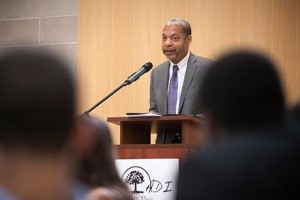
In 1890, ex-slave George Washington Fields became the first African- American to graduate from Cornell Law School. Nearly 125 years later, the Office of Academic Diversity Initiatives (OADI) continues to celebrate diversity at Cornell with a series of awards named after Fields and nine other Cornellian trailblazers.
More than 70 people gathered May 1 for the second annual OADI Honors Awards Ceremony. Student presentations, a dinner reception and musical performances kicked off the event, which highlighted accomplishments and contributions of some of Cornell’s most talented scholars and leaders.
OADI is pronounced “wadi,” which is an Arabic and Swahili word for a cool, protected passage through a desert, often formed by a seasonal river. OADI was formed in 2011 as part of an initiative to provide support and mentorship to Cornell students who come from historically underrepresented backgrounds.
“These services play a crucial role in fulfilling Cornell University’s ‘any person, any study’ motto,” said Carlos Gonzalez, executive director of OADI.
Engineering Dean Lance Collins gave the keynote address for the awards ceremony. The first African-American dean at Cornell, Collins shared his insights on the role of diversity in the three core pillars of academic excellence: scholarship, leadership and community engagement.
Collins encouraged the audience to seek mentors and to mentor others, to lead by inspiring others to take action, and to work for results rather than recognition.
Collins also emphasized the importance of thinking about diversity not only as a social justice issue, but also in terms of the inherent value that it brings to society. “We are a pluralistic society, and there is great power and strength in that,” he said. “Each of you in the audience brings something special and unique and positive, adding to the excellence of this institution.”
OADI presented 10 awards named after some of Cornell’s most inspiring trailblazers that recognized achievement and excellence of scholar-leaders and campus partners. This year’s recipients were:
- Andrew Martinez '12, assistant dean of students, 626 Center for Intercultural Dialogue – Ryokichi Yatabe Award for Outstanding Alumna/Alumnus Partner.
- Anthony Burrow, assistant professor, human development – Estevan Fuertes Award for Outstanding OADI Faculty Partner.
- Angel Keen, assistant director, Diversity Programs in Engineering – Tomás Bautista Mapúa Award for Outstanding OADI Staff Partner.
- Zarif Islam, M.P.S. candidate – Toni Morrison Award for Outstanding Graduate Mentorship.
- Scholars Working Ambitiously to Graduate (SWAG) – Club Brasileiro Award for Outstanding Organization.
- Kemar Prussien '15 – Solomon Cook Award for Engaged Research and Scholarship.
- Rachel Reindorf '16 – George Washington Fields Award for Professional Development.
- Andrea Kim '12– Gloria Joseph Award for Opportunity Programs Students.
- Allison Arteaga '18 – Marvin Jack Award for OADI Emerging Scholar-Leader.
- Misha Inniss-Thompson '16 – Jerome Holland Award for Outstanding OADI Scholar-Leader.
Thaddeus Talbot '15 was selected as the student speaker for the awards ceremony. Earlier this year, Talbot marched in Selma, Alabama, to commemorate the 50th anniversary of the 1965 voting rights marches from Selma to Montgomery.
“Tonight is all about taking risks and the rewards that follow,” said Talbot.
Josephine Engreitz ’15 is a writer intern for the Cornell Chronicle.
Prevailing over pain
Reprinted from Human Ecology Magazine, Spring 2015
Human Ecology's Translational Research Institute for Pain in Later Life, a New York City-based center that helps older adults prevent and manage pain, received a five-year, $1.95 million renewal grant from the National Institute on Aging.
TRIPLL unites social and psychological scientists at Cornell's Ithaca campus and Bronfenbrenner Center for Translational Research, researchers at Weill Cornell Medical College, and community-based health care practitioners to study innovative, nonpharmacological methods to ease persistent pain.
In its first five years, TRIPLL funded 30 pilot studies on innovative treatments, protocols, and interventions for improved pain management. With the grant renewal, TRIPLL adds a focus on behavior change science, seeking to apply insights from psychology, sociology, economics, and communications to develop optimal pain management techniques.

